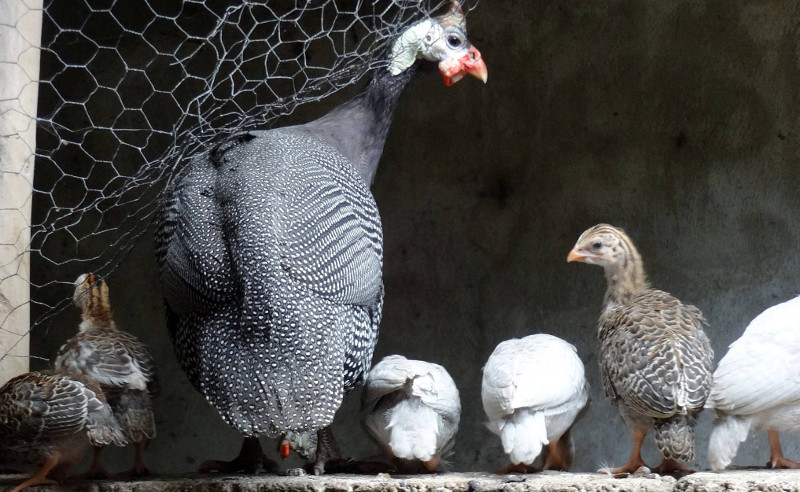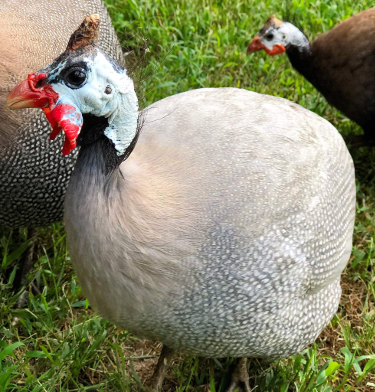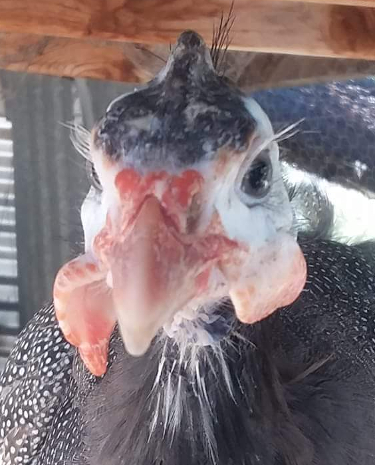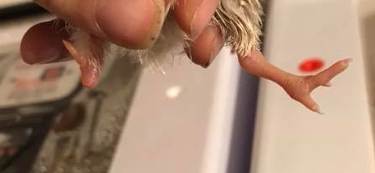Breeding Guinea fowl.

Table of Contents
Are Guinea fowl difficult to breed?
It can be more difficult to get fertile eggs and it definitely costs more as they lay fewer and you need more males to maintain the fertility of the flock.
I personally do not think that Guinea fowl are difficult to breed. I have been breeding on a small scale for the last eleven years and my hatch rate with incubated eggs is good. Incubating with Guinea hens is hit and miss but using broody chickens is the best method by far.
There are fewer faults in adults Guineas and fewer selection criteria. They are kept for eggs and meat so choosing healthy productive parents should give you the offspring you are after.
In a small flock the males do tend to be monogamous and like to have just one partner to pair up with. Although Guinea fowl tend to pair off, it is possible to breed 3 or 4 Guinea fowl hens with one male.
I thoroughly enjoy keeping, rearing and breeding my guinea fowl and would recommend it to anyone thinking of keeping guinea fowl who have the right environment to keep them.
In selecting stock for mating Game fowl, try to keep clearly in mind the purpose of the breeding. In the case of selecting guinea fowl and other poultry like turkeys and pheasants for breeding there are three criteria:
- Egg production,
- Meat production,
- Desired colour.
The objective of breeding is to set a desired standard in colour, type, and markings. Which when mated will produce offspring predictably close to the standard.
For egg production you should be selecting Guineas that more than 100 eggs a year and that have no misshapen eggs or deformities. If hens are trap nested, it is easy to make the selection on the basis of good egg production, trap nesting is not a suitable method of assessing Guinea fowl so another is needed.

There is less to worry about when choosing Guinea fowl breeding stock as there is not the same problems with feather markings and patterns as you would have with chickens for example.
If the desire is to produce table fowl then a bird that has a standard type, or a body shape suitable for carrying an abundance of meat should be selected. They should be broad and deep of body, have good length of back and keel, and especially a broad breast well covered with meat.
Selecting Guinea fowl breeding stock:
Guineas bred to standards produce will eggs and table carcasses which are much more nearly uniform in size, shape, and colour, and which therefore bring better prices.
Below: Avoid wattles imbalances in breeders.

It costs the same to feed and care for quality fowls as for mongrels, and there is often an added income possible from them, which may amount to a handsome profit from the sale of breeding stock or eggs for hatching.
Health and vigour:
By selection for health and vigour over the years of a breeding program is it possible to build up a flock which will produce fertile eggs, strong youngsters capable of making quick growth, and laying hens with sufficient stamina to withstand the strain of heavy egg production.
The shape and features:
The comb, face, and wattles should have a good, bright colour. The eyes should be bright and clean with no cloudiness, and the head should be comparatively broad and short, having a fairly short, well-curved beak and showing no tendency to be long.
The age of the breeding birds:
You can select any age of birds to include in the breeding flock. The cock or male bird should be fully grown so as his features can be properly assessed, something that would be difficult before he is fully grown. Second season hens are better than first season layers, as they lay more consistent eggs and tend give better fertility and stronger chicks.
Avoid the use of older stock unless you have no choice. 2 and 3 year old hens are better than older hens.
Flock fertility:
To make sure that the fowl are kept in good breeding condition the birds and the houses should be examined to see that they are not infested with lice or mites. Either of these pests in any numbers will seriously affect or totally destroy fertility.
Below: Do not breed from birds with deformities or splayed legs.

Care must also be exercised to see that the male does not frost his comb or wattles. If these are frosted his ability to fertilise eggs will be impaired and may not be recovered for several weeks. On very cold nights when there is danger of the combs being frosted the males to be used as breeders must be placed where their combs will not freeze.
Housing breeding stock:
This is a little difficult with Guinea fowls as breeding flocks tend to be small and need a lot of space.
The breeding stock must be provided with comfortable quarters. The coop must be draft proof yet well ventilated and dry. Room enough must be allowed so that the birds will not be crowded. If the birds are in a yard, 4 square feet of floor space per bird should be allowed.
Where to find breeding guineas:
Good quality stock will only come from knowledgeable breeders. You are unlikely to get the best stock from eBay or Craigslist where the sellers do not necessarily have a reputation to preserve. Check out out for sale page or those is forums. there are one or two specialist guinea websites.
Feeding Guinea fowl breeding stock:
The breeders must be fed well to keep them in good condition and so that they will produce eggs. Any good high protein game fowl or turkey ration ration is suitable for this purpose.
In my experience Guinea fowl like a variety of feeds and should be give access to greens, grit and shell, a high protein ration and some whole grains which include a few sunflower seed kernels. Wheat,oats, barley, millet and cracked maize are all also suitable for feeding Guineas.
As a supply of green feed is usually lacking late in the winter or early in the spring, sprouted oats, cabbage, mangles, or cut clover or alfalfa should be fed to the fowls.
How long does Guinea breeding take?
Guinea fowl mating should be made at least 2 weeks before beginning to save the eggs for hatching. Maximum fertility takes time and it can be desirable to mate even further ahead than 2 weeks so that a few eggs can be test incubated for 5 or 6 days to see whether they are fertile.
If these eggs are not fertile, there is still time to change the male bird and thus be sure of fertile eggs for the earlier hatches.
